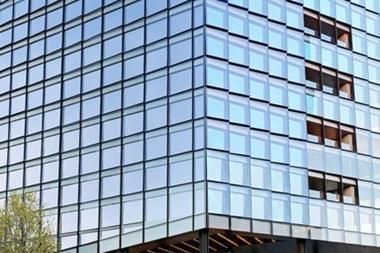Customers have higher expectations than ever before – and rightly so.

There is now a wide range of office providers putting the occupier in the driving seat, which means that they don’t need to simply make do.
This customer-centric approach has long been used in the retail and hospitality sectors, but is now being adopted more widely. The revolution has been driven by flexible providers, because we are at the coalface – we interact with our customers directly and put the time in to understand their needs.
Our experience shows that it is no longer enough to measure customer satisfaction through ad hoc processes and at the beginning or end of a customer moving in. The information quickly becomes outdated and loses its value to both us and the customer.
We now proactively gather scheduled feedback from our 3,000 customers twice a year so that we can use the data to inform decisions on service provision, building management and even refurbishments and acquisitions.
In terms of improving customer satisfaction, data is helpful in providing a consensus on facilities that are working well or could be improved. We have adjusted our properties to respond to customer requirements, for example by adding more cycle storage, providing more quiet space and phone booths or making meeting spaces bigger.
We know customers prioritise connectivity when they are weighing up their office needs, which is why we continue to upgrade our digital infrastructure to further strengthen our wifi service and minimise any risk of connectivity downtime.

In addition, faced with growth and talent retention pressures, businesses now look for a sense of community, collaboration and wellbeing within inspiring working environments. It’s often this added value that ensures a company stays for six years rather than six months.
A sense of community rarely happens by accident. To encourage more informal interactions and business relationship, we have multiplied our breakout spaces and created a programme of 300 customer events per year. Last year we launched WorkspacePerks, a benefits platform encouraging customers to trade between each other. There are also offers on anything from furniture to storage, stationery, insurance, gym memberships, coffee and clothes.
Our focus on wellbeing initiatives has been hugely popular with customers – flagship properties include onsite gyms and cycling facilities, while our centre managers team up with customers to provide free yoga, meditation and wellbeing classes during lunch breaks or after work.
Successful approach
Not surprisingly, those centres we have adapted and invested in to reflect customers’ needs have outperformed other properties in our portfolio. This has been evident at the newly refurbished Edinburgh House in Kennington, where we created a triple-height, light-filled central atrium to serve as a co-working hub, event space and café. It was designed in response to customer feedback for more natural light not just in the offices, but throughout the communal spaces.
The success of the survey-based approach means that we will be investing further to gather more data, to ensure that our buildings are aligned with customers’ requirements. Ultimately, we all have the ability to access rich and valuable data thanks to the proliferation of technology, so there is no excuse not to use it and react accordingly.
Customers should be central to our approach as the value of real estate is increasingly linked to the experience of those who use it every day.
John Robson is asset management director at Workspace Group





























No comments yet